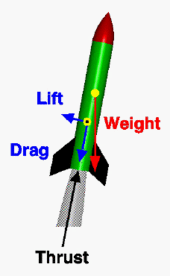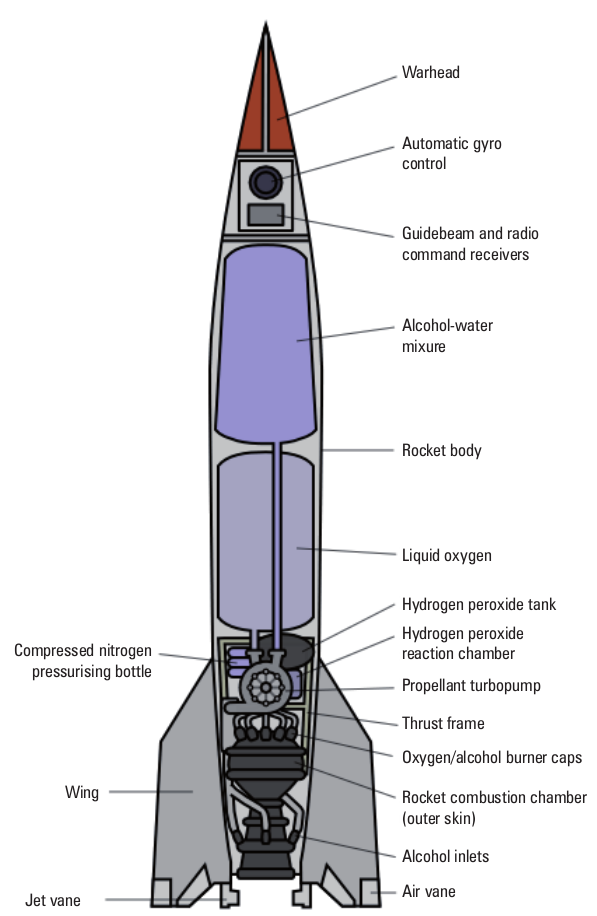Article: Rocket History
- Due Jan 25, 2018 at 11:59pm
- Points 100
- Questions 3
- Available Nov 13, 2017 at 7:30am - Jan 25, 2018 at 11:59pm
- Time Limit None
- Allowed Attempts Unlimited
Instructions
A History of Rockets

Today's rockets are the result of thousands of years of experimentation. There has always been one main principle behind rocket flight: the heating of fuel to produce motion.
In 400 B.C., Archytas, the Greek philosopher and scientist, was one of the first to successfully use this principle. He impressed his fellow citizens by flying a pigeon made of wood. The bird was suspended on wires and powered by hot steam.
The first true rockets may have emerged by accident. In the first century A.D., the Chinese had a simple form of gunpowder, which was used to make colorful explosions during festivals. The Chinese filled bamboo tubes with the gunpowder mixture and tossed the tubes into fires. They soon realized that these tubes could launch themselves just by the power produced from the escaping gas.
From Weapons To Fireworks
The first known use of true rockets was in 1232 during the battle of Kai-Keng. The Chinese fought off the Mongolian army using an early form of rocket similar to their firecracker tubes. After the battle, the Mongols made rockets of their own. They may have been responsible for spreading the technology to Europe.
By the 16th century, rockets were no longer used as weapons. They were used in fireworks displays, though. Johann Schmidlap, a German fireworks maker, invented the step rocket. This was made from a large sky rocket that carried a smaller rocket. When the large rocket burned out, the smaller one continued to go higher. Schmidlap's idea is still used in all rockets today that go into outer space.
During the late 1600s, the English scientist Sir Isaac Newton studied motion. He developed three laws of motion, which are the starting point in explaining how rockets fly. These laws had a major impact on the design of rockets in the years that followed. "The Rockets' Red Glare"
"The Rockets' Red Glare"
During the end of the 1700s and early into the 1800s, rockets were once again used as weapons. The British Colonel William Congreve set out to design rockets for the military. His rockets were highly successful. In fact, they inspired the phrase "the rockets' red glare" in a poem by Francis Scott Key, which later became "The Star-Spangled Banner."
The rockets' accuracy still had not improved much from the early days, however. An answer to this problem was found by William Hale. He invented a way to direct the escaping gas so as to make the rocket spin. The same principle is still used today.
In 1898, a Russian schoolteacher, Konstantin Tsiolkovsky, proposed the idea of space travel using rockets. In a report published in 1903, he suggested that liquid fuel - rather than a solid fuel, like gunpowder - could make rockets fly higher.
Father Of Modern Rocketry
The first successful flight with a liquid fuel rocket was achieved by Robert H. Goddard in 1926. Fueled by liquid oxygen and gasoline, Goddard's rocket flew for only two-and-a-half seconds and climbed just 41 feet. By today's standards, the flight was unimpressive. Still, Goddard's gasoline rocket started a new era in rocket flight.  Goddard's experiments continued for many years. He developed a parachute system to return rockets and instruments safely after flight. For his achievements, Goddard has been called the father of modern rocketry.
Goddard's experiments continued for many years. He developed a parachute system to return rockets and instruments safely after flight. For his achievements, Goddard has been called the father of modern rocketry.
A third great rocket scientist was Hermann Oberth. His writings inspired the creation of rocket societies around the world. In Germany, one such group was the Society for Space Travel. The formation of this group led to the development of the V-2 rocket, a weapon used by the Germans in World War II.
The V-2 rocket was small, but it could destroy entire city blocks. Fortunately, the V-2 came too late in the war to help the Germans win. With the fall of Germany, many German rocket scientists moved to the United States or to the Soviet Union. What followed was an intense period of competition between the two powers.
First Satellites In Space
On October 4, 1957, the Soviet Union launched Sputnik I. It was the first satellite to successfully orbit around the Earth. Less than a month later, the Soviets launched another satellite. This one carried a dog named Laika. Laika survived in space for seven days.
A few months after the first Sputnik, the U.S. sent its first satellite into space. Explorer I was launched by the U.S. Army on January 31, 1958. That year, the United States created NASA, the National Aeronautics and Space Administration.
Soon, many people and spacecraft were being launched into space via rockets. Astronauts orbited Earth and landed on the moon. Satellites helped scientists study the weather and allowed for worldwide communication. More and bigger rockets had to be built to help launch these new tools into space.
Over time, rockets have evolved from simple gunpowder devices into giant space vehicles. They have allowed humans to explore the universe.